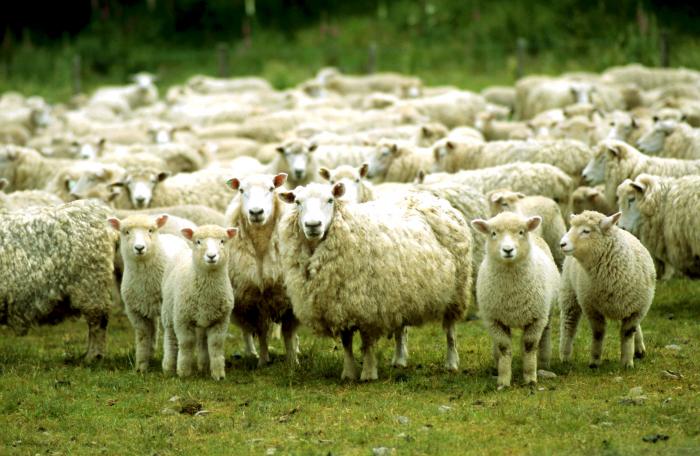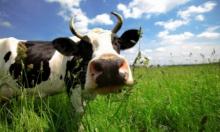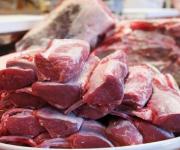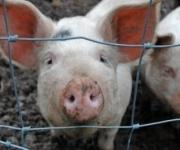Hayfields and pastures are land, mostly meadows with grassy vegetation. Here cattle is grazed, the grass is mowed for animal feed.
This is reported by http://agro-yug.com.ua
In all countries of the world, pasture content is predominant for cattle. In the total balance of agricultural land in the EU, haymaking - pasture land is about 40% and is the main source of income for 80% of farmers. In countries such as the United Kingdom, the Netherlands, Holland, the role of pasture remains always important and relatively stable despite urbanization. For Ukraine, the optimal ratio should be 1 hectare of arable land 1.6 hectares of pasture.
Today, this figure has significantly decreased and is only 0.2 hectares per 1 ha of arable land.
In Western Europe, the productivity of hay-pasture land is 125 c/ha in the Netherlands, 45-50 in France, 80 in Germany, 80 in Belgium, and 90 c/ha of dry weight in Denmark. The increase in milk yield when grazing cows, compared with the winter-stalled content, is 3-5 kg of milk, the consumption of concentrates is reduced by 1.4 times.
This is due to the exceptional nutritional quality of the pasture. Grass grasses of grazing maturity contain 14-18% of protein in dry matter, 3.6% of fat, have a low fiber content (19-23%) enriched with sugars. With pasture grass, animals are fully provided with mineral substances. High productivity of livestock in the pasture is associated with the beneficial effect of exercise when grazing the physiological activity of the functional systems of the body as a whole and the mammary glands in particular. As a consequence, modern herbage in Ukraine is in an exhausted state. But according to the Food and Agriculture Organization of the United Nations (FAO) in Ukraine, the number of cattle at the beginning of 2017 is 3 million 675 thousand heads - this is the smallest figure for the entire documented history.
As a result, production of meat and dairy products decreased.
We must not forget one more problem. In Ukraine, about 50 million hectares of land suitable for use, up to 70% of them are used for agricultural production. European countries have this figure in the range of 30-45%, and in the United States - 26%. This means that the intensity of production in such countries is high, but in our country, unfortunately most of the land is plowed. As is known, this leads to land degradation, loss of humus and deterioration of soil structure. As a result, the quality and quantity of the crop are reduced. Up to 90% of agricultural land is plowed, with almost no pasture. But with the help of growing such forage grasses as clover and alfalfa, you can not only provide animals with quality food, and also restore the fertility of the earth. The clover root system accumulates 150 kg of nitrogen in one season, and alfalfa is not only an excellent forage grass, but also a legume syderata that is able to saturate the soil with nitrogen, due to a powerful deep root system to improve the soil structure, increase its water and air permeability and promote accumulation of humus.

According to the Department of Ecology and Natural Resources of the Mykolaiv Regional State Administration, the area of degraded land in the Mykolayiv region in 2016 was 246.40 thousand hectares. 223,60 thousand ha of degraded lands (9,09% of the total area of the territory) and 22,8 thousand hectares of unproductive land (0,90% of the total area) are required to be preserved. The land fund of the Mykolayiv region as of January 1, 2017 is 2458.5 thousand hectares, most of which are agricultural land, indicates a high level of agricultural development of land. Haymaking pastures occupy 267.9% of the total area. This is 10.9 thousand hectares.
Recently, at a meeting of the Cabinet of Ministers of Ukraine, the direction of 4 billion UAH to support livestock breeding was adopted. In particular, every peasant, will get a cow, will get 2500 UAH. In total, 700 million UAH are provided for this: that is, for the purchase of 280 thousand dairy heifers.
Taking into account that no more than 1.2-1.5 grazing cycles are carried out in the fodder land in this zone, and the pasture period can last up to 300 days, it is necessary to create multipurpose ammonium phytocenoses of seasonal, combined use, combining both grass seeding in arable land and improvement of natural forage lands on the basis of perennial legume-tonkonogovyh grass mixtures of different terms of mowing and pasture maturity. Increase in the productivity of fodder in the whole area to 4.4-5.2 c/ha feed units, even with an increase in the number of cattle by a factor of 1.5 compared to the existing one, will allow to keep half of the livestock during the entire grassland period on natural forage lands.
At present, the conservation and improvement of natural and sowing old-growth fodder lands requires the use of available resource and energy-saving technologies based on a more complete use of intensification factors and effective use of on-farm resources. In recent years, the system of these activities is based on the creation and use of sowing pastures, the use of pasture rotation, the provision of grass for various years of productive life, rest from grazing, the alternation of haymaking and pasture ways of using grass stands, superficial and radical improvement of fodder lands, organization of commodity seed production of perennial wheatgrass, couch grass, brome grass, melilot, medick, sainfoin, mogar.
The simplest and most accessible direction of restoration and increasing the productivity of natural and old-growth grassland grass stands is the use of low-cost technologies for their surface improvement, based on the restoration of degenerate grasses by new varieties and species such as medium and elongated wheat grass, comb-shaped and Siberian wheat grass, awnless brome, meadow fescue, medick sowing and yellow, clover white and pink, melilot, perennial sorghum.
When organizing haymaking-pasture conveyors with a duration of at least 280 days per year, the optimal pasture turnover is constructed according to the following principle: the pasture is divided into three sections; one of them bleed at the beginning of the season, the second - in the second half of the season, the third is not used and left for rest. On absinthic saltwort and ephemeral pastures spend no more than one cycle of bleeding, and on wormwood-cereals and feather grass in some years it is allowed to use twice. An obligatory condition for the conservation of productive grass stands in time is the annual rest of the detachments once every three years. After these events, only haymaking is conducted in such detachments, and grazing is only started the next year.
When organizing winter pastures for livestock meat direction, a rational method of using them is a pasovishchebert with three fields, used in strict sequence - autumn, winter, spring. Such a system of application of the grass stand, with alternation of grazing and rest, allows up to 70% of pasture territory to be used annually.













 Лобіювання інтересів тваринників в органах виконавчої влади
Лобіювання інтересів тваринників в органах виконавчої влади Участь в науково-практичних заходах Асоціації із залученням європейських експертів світового рівня
Участь в науково-практичних заходах Асоціації із залученням європейських експертів світового рівня Щотижневий огляд тенденцій та прогнозів розвитку тваринницької галузі
Щотижневий огляд тенденцій та прогнозів розвитку тваринницької галузі